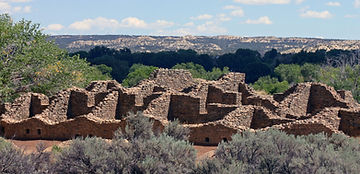Retired Rodents - they're in the retirement category because they're
shampoos are great. Don’t ever use people shampoos because they aren’t formulated for animals, least of all small ones, and can harm them. Whether your rat has parasites or not, never use standard flea and tick shampoos on them because mostaren’t safe for small animals. One safe veterinarian recommended shampoo that Tiny Toes uses on rats (but never babies) who arrive infested with parasites, is Adams Plus Flea and Tick Shampoo for cats, kittens, dogs, and puppies. Follow the instructions very carefully to determine the safe amount of shampoo for your rat’s weight and leave the shampoo on for 5 minutes, but watch your clock so you know you don’t exceed 5 minutes.
Rats generally dislike being bathed so they may try to climb up your arms, accidently scratching you, so wear something with long sleeves that you don’t mind getting wet and try to keep them in the palm of your hands. Filing the rat’s nails down a bit with a soft emery board before a bath can help with this. Because rats are sometimes frightened and stressed by bathing, it’s natural for them to poop in their “bathtub” water so simply remove the poop or refill the sink with fresh warm water as needed.
Take Precautions!
It is extremely important that you NEVER leave your rat unattended in water, especially if he/she is sick, weak, or old. Rats such as these can fall over and drown in the tiniest amount of water so please take extra precautions with them. Even the healthiest of rats can suffer injury or worse if they fall on a slippery surface so make sure you are present every second when bathing rats.
Be careful to not get any water in your rat’s ears or it may result in an ear infection. If you think water may have entered the ears, gently dab the outer part of the ear canal with a Q-tip, but don’t insert the Q-tip into the ear!
Step By Step Bathing:
Step #1: Fill the sink with warm water and have some kitten shampoo with natural oils available as well as 1-2 towels ready.
Gently dip your rat in the water, making sure to not get his/her head wet, and then rub him/her gently. Talk to your rat to reassure him that you would never let anything happen to him and that he/she is safe with you.
Step #2: Remove the rat from the water, pour a bit (read the instructions to determine a safe amount for a rat) of shampoo on your palm then lather it into your rat’s fur, but not head, making sure to cleanse the belly, tail, groin area, and feet well. Use your wet fingers, without shampoo on them, to gently massage water into the fur on top of the rat’s head and face a number of times. This is an easy way to clean these areas. Or, after the bath you may wipe the rat’s head and face down with a warm wash cloth without shampoo. If your rat hasn’t been grooming himself/herself properly and is encrusted with food or feces you may need to rinse the rat and then re-bathe him/her with a second application of shampoo. If the rat has been syringe, fed be sure to clean well under the chin and chest where food often drips and becomes encrusted. Bath time is a great time to do an exam of your rat’s body too, checking for lumps or any other changes that you may have been unaware of and which may need veterinary attention.
Step #3: You can then rinse out your rat either in standing water in the sink or under the tap running slowly if he/she is calm enough. Rinse out the shampoo very thoroughly or it can cause skin irritation.
Step #4: Place your rat on a dry towel and let him/her shake off. Towel dry him/her as best you can, and if he/she is calm you can even use a blow dryer at the lowest speed and heat setting to help dry him/her. To determine if the temperature is too warm, hold the dryer away a bit and then blow the air on your hand that is holding the rat. If it burns your hand then it will surely burn the rat too so back up the dryer until it doesn’t burn your hand. Never return your rat to his/her cage wet or it can result in a cold, pneumonia, or worse. I don’t even like to see a damp rat returned to his/her cage. It only takes 10 minutes to thoroughly dry a rat and it’s best to do so. Once your rat is back in his/her cage he/she may start grooming him/herself as if to say, “Here, let me show you how it’s supposed to be done.” Rats are meticulous!


Salmon Ruins
near Farmington, NM
Bathing Rats
Rats don’t need to be bathed often as they instinctively keep their fur and body quite clean. It’s one of the many reasons that rats make excellent pets! If you keep your rats’ cage clean then they shouldn’t get dirty; however, rats that are sick or old can’t care for themselves well. So, if they develop an odor or become dirty with urine, feces, or food, it’s time for you to help by providing them with a bath as often as is necessary.
Bathing rats too often may result in their fur being depleted of natural oils which can cause dry skin and irritation so use a gentle small animal shampoo with essential oils. Oatmeal

Calgon
take me
away!





